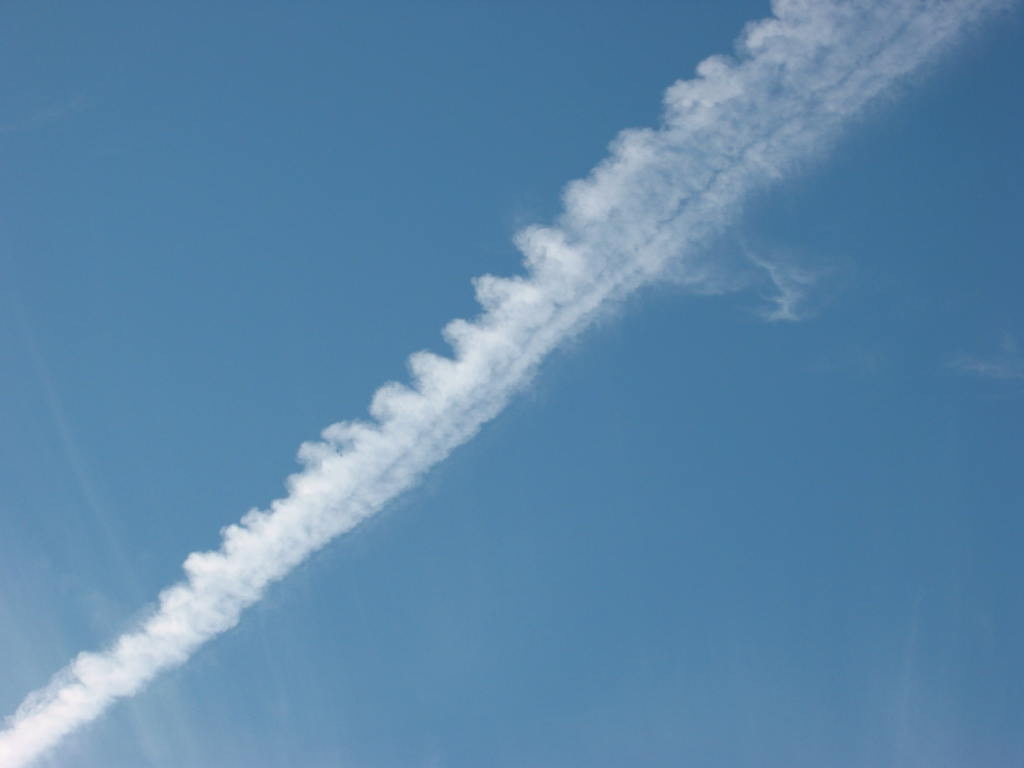Here’s one of those things you often hear but seldom notice: the sound of a jet flying overhead:
Now, the pilots of this jet are not playing games with the throttle, increasing and decreasing the power rapidly. One would expect that the roar of the jet plane would be steady and even except for changes due to the Doppler Effect. Here’s a recording of a fighter jet passing low:
(It’s necessarily shorter because at low altitudes, jets don’t stay visible for long.)
So why is there a difference? Here’s a graph of the sound in the first audio:

The vertical red lines mark the peaks of the waves. Notice the regularity of those peaks. There definitely appears to be some sort of cyclicity at work here, with a period of about one second. I suspect that the period increases as the jet moves further away from the source. Hence, this phenomenon is not due to random turbulence. It might be related to “contrail pendula”, which are the ‘teeth’ sticking out from the contrail.

I believe that contrail pendula are caused by wingtip vortices, which are spirals of air created by the motion of an airplane’s wingtips. I find it hard to believe that there is a connection between contrail pendula and the cyclicity of sound from a jet aircraft, because the periods of cyclicity are different. My understanding is that several contrail pendula are created each second, whereas the periods of the sounds are longer than that.
I suppose that the only way for me to resolve this puzzle is to make more recordings of jet aircraft passing overhead, which will not be difficult, because I live about ten miles from an airport and often see jet aircraft approaching or departing from the airport; I also see aircraft at high altitude flying between San Francisco and Portland or Seattle.
Solution (November 13th)
The solution became apparent to me when I saw a video a small rocket launch. Here’s a frame from the video:
The trail left by the rocket is contorted by the winds at different altitudes. I had rejected the hypothesis that the sound variations were caused by differing layers in the atmosphere, because I was thinking of thermally differentiated layers. But I neglected to consider variations in air movement (winds) at differing altitudes. This rocket trail clearly shows that there are many differing wind patterns at different altitudes. These differing wind patterns create slight differences in pressure and temperature that in turn partially reflect and refract the sound waves traveling downward. These reflections and refractions in turn create the echoes and other distortions that produce the variations in amplitude of the perceived sound.
One forehead slap for Chris.
